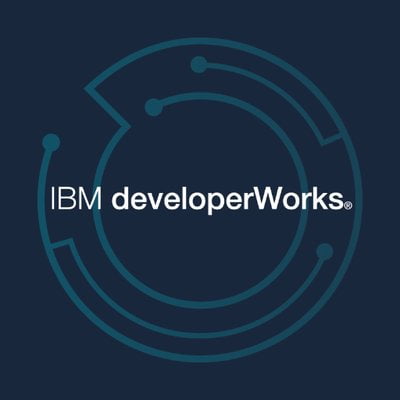Kodi 20 “Nexus” Released: A Comprehensive Look at the Latest Features and Enhancements
The Kodi Foundation has officially released Kodi 20 “Nexus,” the latest stable version of this free, open-source multimedia software compatible with a wide range of platforms, including GNU/Linux, Android, Raspberry Pi, iOS, tvOS, macOS, and Windows. This significant update arrives nearly two years after the introduction of Kodi 19 “Matrix,” bringing a myriad of exciting new features and enhancements designed to improve user experience and expand the capabilities of this beloved home theater software.
Major Updates and Features in Kodi 20 “Nexus”
1. Enhanced Multimedia Support
One of the standout features of Kodi 20 “Nexus” is its support for the PipeWire multimedia server. This addition enhances audio and video capabilities, allowing for better resource management and improved performance on various devices.
-
AV1 Hardware Decoding: Kodi 20 introduces AV1 hardware decoding support on Linux via VA-API (Video Acceleration API), making it easier to stream high-quality video without taxing system resources. This is also extended to Android systems, showcasing Kodi’s commitment to modern video standards.
- Built-in Steam Deck Controller Support: Gamers will be thrilled to find built-in support for Steam Deck controllers, allowing for an effortless transition between gaming and media consumption.
2. Network and File System Improvements
Networking capabilities have also received focused enhancements:
-
NFS Version 4 Support: The new initial support for the NFS version 4 (NFSv4) network file system protocol improves file sharing across devices.
- WS-Discovery for UNIX Platforms: This feature allows for easier SMB discovery on UNIX platforms, including Linux, Android, and Apple devices, enhancing accessibility for file-sharing services.
3. User Interface Enhancements
Kodi has made significant updates to its user interface, promoting an even more user-friendly experience:
-
Independent Volume Settings: Users can now adjust GUI sounds separately from media playback volume, allowing for a more customized audio experience.
-
Colour Picker Dialog: The introduction of a new Colour Picker window allows users to personalize their viewing environment more effectively.
- HDR Video Enhancements: New media flags for HDR videos ensure that users can accurately identify and enjoy high-dynamic-range content.
4. Optical Media and Native Support
In a move that will please many users, Kodi 20 enables optical media mounting by default on Linux systems, streamlining the process of accessing physical media. Additionally, native support for Apple M1 brings optimized windowing and input handling.
- Support for Read-Only Recordings: Kodi now offers read-only recordings features, enhancing its media management capabilities.
5. Subtitle Enhancements
Kodi 20 also brings a host of improvements for subtitle functionality:
-
Dynamic Positioning: Users can display subtitles with dynamic positions, allowing for more flexibility during playback.
-
Font Style Settings: Customization options have expanded, enabling users to set border size and color, background type and opacity, shadow color and opacity, and blur effects.
- Text Alignment Options: New features facilitate the changing of text alignment for closed-caption subtitles, giving users complete control over their viewing preferences.
Improvements for PVR Users
Kodi 20 “Nexus” significantly boosts its Personal Video Recorder (PVR) capabilities:
-
Provider Specification for PVR Channels: Users can now specify providers for PVR Channels and Recordings, optimizing their viewing experience.
- Enhanced Siri Remote Handling: Users of iOS and tvOS will appreciate better handling of the Siri Remote, making navigation simpler and more efficient.
6. Estuary PVR Home Screen Upgrades
Kodi’s Estuary skin receives substantial improvements:
-
Timers Widget: A new widget for timers helps users keep track of their scheduled recordings more effectively.
-
Recent Channels and Recordings Progress Bars: Users can now see percentage played indicators, allowing them to gauge their viewing history at a glance.
- Click Action Defaulting to Guide: New default click action easily opens up the Guide window, providing quick access to PVR functionalities.
7. Code Improvements and Miscellaneous Features
Kodi 20 is not just about glamorous new features; it also improves the underlying code:
-
Resuming Playback Enhancements: Improved resuming functionalities for Blu-Rays and DVD ISOs in file mode enhance the user experience when returning to previously watched content.
-
HarfBuzz-based Rendering: This feature supports OpenType Font shaping, which can considerably improve subtitle rendering for complex scripts.
- Recursively Removing Orphaned Dependencies: A new function has been implemented for managing add-ons more effectively, streamlining the Kodi interface.
Conclusion
Kodi 20 “Nexus” represents a pivotal advancement in multimedia software, offering users a more refined and versatile experience. With its extensive array of features, from improved subtitle options to PVR enhancements to robust multimedia support, Kodi continues to set itself apart as a top-tier media player.
Explore the Best Kodi Boxes for an Enhanced Experience
To truly unlock the full potential of Kodi and enjoy these new features seamlessly, it’s vital to invest in the best hardware. Be sure to check out the best Kodi boxes, designed to enhance your Kodi experience significantly.
In summary, whether you’re a dedicated Kodi user or a newcomer, the latest update opens doors to a world of possibilities. Embrace the improvements, explore the new features, and let your home theater experience reach new heights with Kodi 20 “Nexus.”




